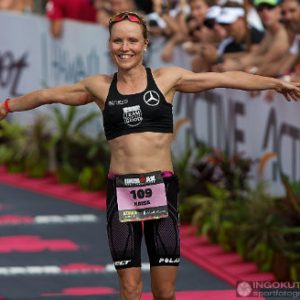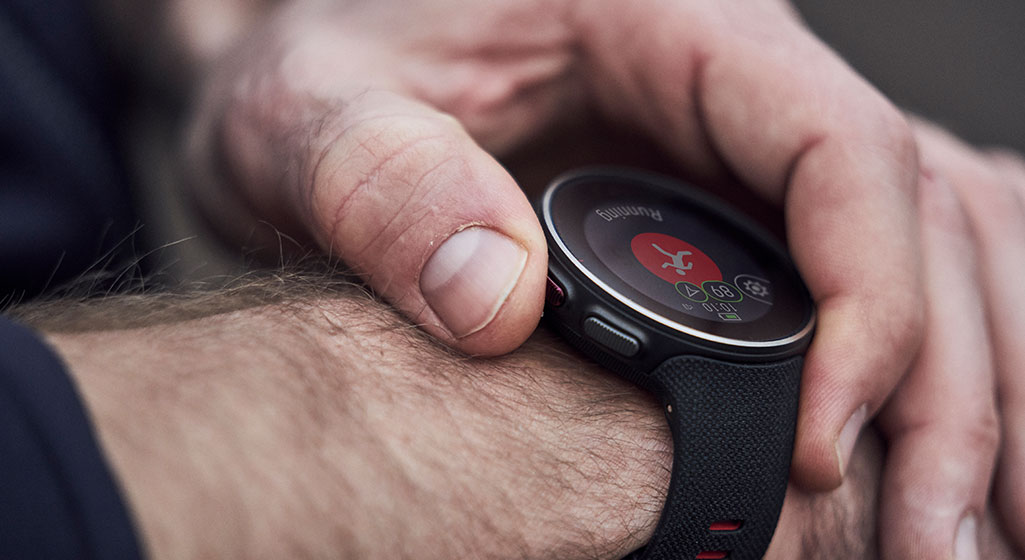With busy work schedules, family responsibilities and ambitious training goals, making time for recovery from training can be a challenge for many dedicated triathletes. But to take your performance to the next level and reach your goals, recovering properly is one key aspect of a training plan that shouldn’t be overlooked.
We got together with pro triathlete Kaisa Sali to discuss her thoughts and experiences on the importance of rest and recovery from training and how she prioritizes recovery in her training plans.
How To Monitor Recovery From Training
There’s truth to the old adage of that athletes should train smarter instead of harder. But whether you’re an amateur triathlete or a pro like Kaisa Sali, finding the balance between working hard and being properly recovered can be difficult to determine.
To make it easier to identify whether she’s overtraining or right on track, Sali relies on a combination of metrics and self-perceived fatigue.
“I measure my performance every day by comparing my running and swimming speed and my cycling power with how I’m feeling in general,” Sali says.
Measuring my recovery with the Polar Vantage V is easy and allows me to monitor not only recovery from training but from overall stress, too.
“If my performance is not as good as usual for several days in a row, I know I have to change something.”
By monitoring heart rate during training, heart rate variability, and orthostatic testing measurements, Sali is able to get a handle on when she needs to take a step back and analyze what she’s doing in training. Orthostatic testing in particular has provided Sali and her coach with a way to fine-tune her training plan and add in recovery periods when needed.
“For exercisers and beginner athletes just starting out their careers, measuring heart rate every morning can help guide their training and recovery to the right path,” Sali says. “Doing the orthostatic test every day (with Polar Vantage V) gave me and my coach valuable insight into my training and recovery.”
Signs That You Need More Recovery From Training
Though metrics are a good tool to have when looking to determine how you’ve recovered from training, you still need to listen to your body.
Recognizing the signs of overtraining and general fatigue according to how you feel can be just as important.
While the exact signs can vary greatly from person to person, here are a few warning signs of overtraining:
Changes in personality. For Sali, suddenly being irritated and cranky all the time are clear signals.
Lacking motivation to train. Everyone has days when they don’t feel like exercising. But prolonged periods where Sali has to force herself to get up and get moving are indicators that she may need a break to reenergize.
Hormonal changes. As a woman, Sali says that changes in her menstrual cycle are often related to overexertion. Though highly individual, less frequent cycles may be an identifier.
Pro Tips to Boost Recovery From training
Analyzing metrics and deciding that you need a break is only half the battle. Once you have the information in hand, how you go about altering your training plan and recovering from training properly is the next step to getting back on track.
Here are a few of Sali’s go-to tips to boost her recovery and get back to normal training as soon as possible:
Schedule Rest
Sometimes, planning down time can help to keep overtraining from occurring in the first place. Sali likes to end each triathlon season with a two-week break with no training, and follow that with two weeks of easier than normal training at about half the volume.
During the season, she also schedules more rest following hard sessions. “During tough training days, I like to make time to take a nap during the day,” Sali says. “On days that are less demanding training-wise, I invest in my social life and spend time on office duties.”
Eat a Healthy Diet
If you aren’t getting the proper nutrients into your body for your muscles to repair and get stronger, chances are you’re going to need more time to recover. This aspect of recovery is something Sali takes seriously.
“I make sure my diet supports both my performance and recovery. I eat healthy food regularly. The key ingredients of my diet are vegetables, quality protein and carbs timed right according to my training.”
Commit to a Post-Exercise Routine
Just because you’ve finished your running or cycling session doesn’t mean the workout is complete.
A good post-exercise routine is a must for any series triathlete. Massage, stretching, hot and cold treatments, and other rehabilitative tools are part of Sali’s daily routine.
Don’t Neglect Your Social Life
Not everything you do has to be on a schedule. Enjoying life and relaxing are important too, and can help to keep your stress and fatigue levels low.
It’s ok to enjoy a nice glass of wine every now and then, or stay up an hour later than planned. When your mind is balanced, your body is healthy too.
Sali says that the balance between being an athlete and still having a social life is an aspect not to be overlooked.
Neglecting other aspects of your life can affect your training, leading to fatigue and burnout.
“At least for me, social recovery is one of the factors that has a crucial impact on my results,” Sali says. “I get strength and energy from the people close to me.”
If you liked this post, don’t forget to share so that others can find it, too.
Or give it a thumbs up!
I like this article
Please note that the information provided in the Polar Blog articles cannot replace individual advice from health professionals. Please consult your physician before starting a new fitness program.






